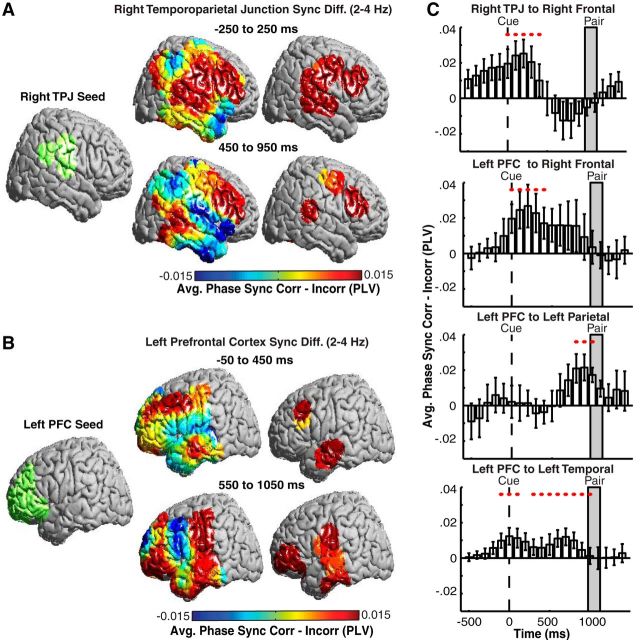Figure 5.
Prestimulus increases in low-frequency pairwise synchrony after cue presentation predicts successful memory encoding across participants. A, Differences in low-frequency (2–4 Hz) pairwise phase synchrony between correct (Corr) and incorrect (Incorr) trials between a right TPJ seed region (green) and all brain regions after cue presentation (left). ROIs exhibiting significant (p < 0.05, corrected for multiple comparisons) differences across participants are shown (right). B, Same as A but for a left PFC seed region. C, Time evolution of average differences in low-frequency (2–4 Hz) phase synchrony between the regions indicated in each subplot title. Significant temporal epochs are indicated with a red circle (p < 0.05, corrected for multiple comparisons in space and time). Error bars represent SEM across subjects.

